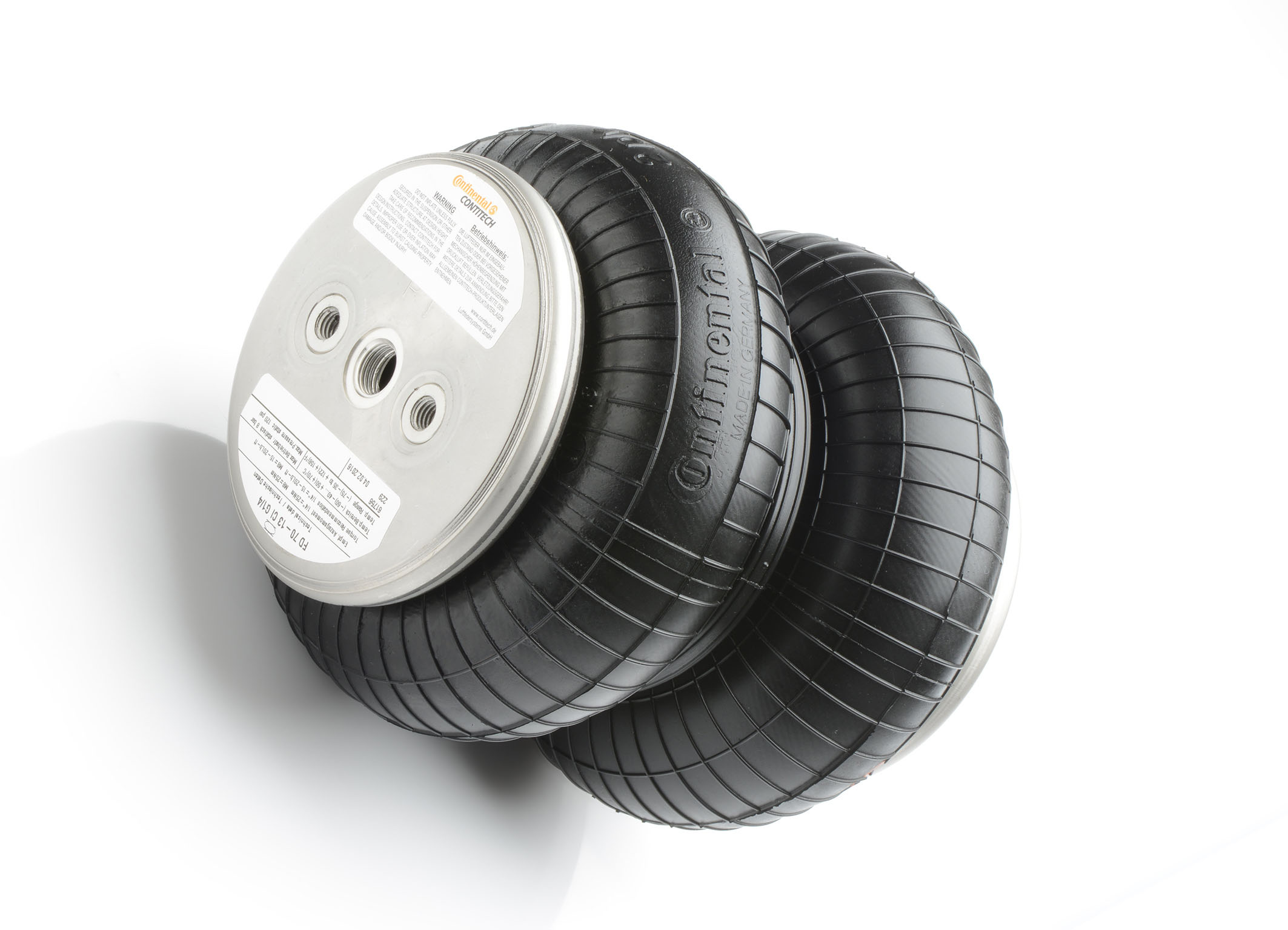ContiTech has extended its air actuator product range: The company is the first manufacturer in the world to offer air actuators made of an ECO compound with improved resistance to chemicals and environmental influences. The new ECO2 air actuators can now also be used in applications in which they are exposed to lubricating oils, corrosive vapors, and alkalis. One potential area of application, among many, is the paper industry.
“Our ECO2 air actuators are ideally suited to the specific demands of this environment,” explains Verena Weiss, head of the Industry segment at ContiTech Air Spring Systems.
 ECO2 air actuators are made of the elastomer epichlorohydrin and are particularly suited to high-temperature applications. Depending on the design, they can be used at ambient temperatures of up to +130°C.
ECO2 air actuators are made of the elastomer epichlorohydrin and are particularly suited to high-temperature applications. Depending on the design, they can be used at ambient temperatures of up to +130°C.
ContiTech’s new ECO2 compound is also lead-free, in response to the European Union’s REACH regulation, as lead oxide is suspected of being harmful to health. This makes it a candidate for the hazardous chemical substances blacklist.
“That’s why we switched to a lead-free ECO2 compound, to ensure we would still be able to supply our products even if lead oxide is banned,” says Weiss.
The new and improved ECO2 air actuators are now part of ContiTech’s product range and are available for almost all the models in the C, D, and R series. Further product development remains a possibility.
Solutions for demanding industry sectors
ContiTech has also adapted the air actuators’ connections in order to meet the specific requirements of particularly sensitive industry sectors. The air actuator models 40 to 530 in the C series now also come with stainless steel plates that are resistant to most acids. Instead of the widely used V2A stainless steel, ContiTech uses high-grade, acid-resistant V4A stainless steel. An additional alloy means that the material is even more resistant to corrosion, especially when exposed to chemicals and environments containing chloride. “This particular feature makes our new development suitable for many industries in which corrosive chemicals and environments are encountered,” says Weiss.
For example, the air actuators with the new stainless steel plates can be used in the chemical and pharmaceutical industries, where components often come into direct contact with chemicals. Especially in areas in which heavy-duty cleaning agents are used, acid-resistant steel is a must. At the same time, in many applications the components also need to be resistant to the flow of liquids and gases.
“The new connections meet both requirements fully,” says Weiss.
The paper industry makes similar demands: high humidity and extreme heat combined with chemicals pose a challenge to the materials. Stainless steel helps to avoid downtimes and their associated costs. Corrosion prevention is also extremely important in the food and beverage industry, in order to meet all the hygiene standards of the U.S. Food and Drug Administration (FDA), for example. Therefore only materials with high resistance to chemicals and environmental influences are used in this sector.


Leave a Reply
You must be logged in to post a comment.